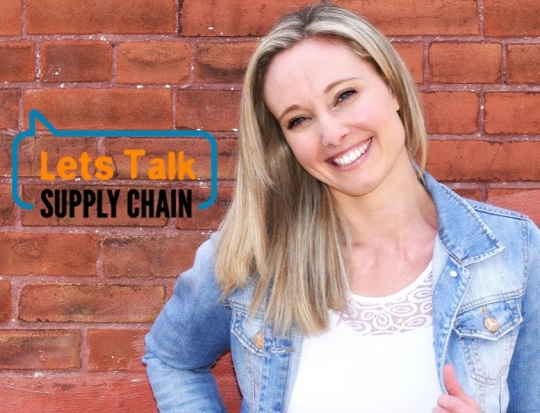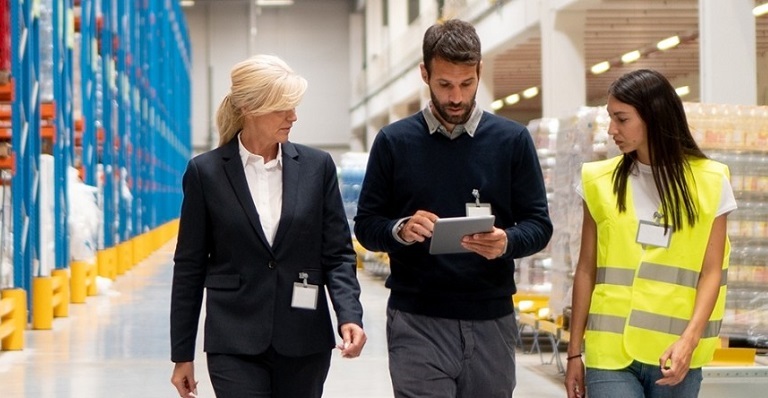Supply chain expert Sarah Barnes-Humphrey says COVID-19 isn’t something businesses could have planned for, but if they invested in technology in recent years, they’ll fare better during the pandemic than those who didn’t.
“We’re seeing gaps in technology from across the board, whether you’re in supply chain or not,” Barnes-Humphrey says, pointing to the idea that companies have had to move fast to adapt to letting as many employees as possible work from home. Technology can also make a big difference when analyzing processes and creating efficiencies.
“The ones that have fallen short on technological investments in their supply chain are really standing out now,” says Barnes-Humphrey, who produces a podcast called Let’s Talk Supply Chain. “Whether that’s planning or whether it’s data for more predictive analytics, you’re seeing your gaps very clearly.”
She advocates for data being the core of a business because it’ll give C-suite executives and leaders the information they need to succeed in the future and help them plan better or be more predictive when it comes to disasters such as this one, as well as short-term disruptions, like terrorist attacks or typhoons.
“I think the companies that have embraced data are probably winning a lot more than the companies that have not,” she says.
You should also check out
Are you doing business abroad or considering it? Discover how to optimize your supply chains and minimize risk with help from our experts.
Barnes-Humphrey has seen disruptions in supply chains across all sectors. But there have also been good news stories: manufacturers who’ve been able to pivot from one product to another, sometimes completely changing sectors in the process. She points to automobile manufacturers who’ve changed gears and are now making personal protective equipment. Luxury fashion company, LVMH, which owns Dior, Fendi, Louis Vuitton and Givenchy, is another example. It’s now producing face masks. Those are the businesses that will “make the most impact and be remembered afterwards,” she says.
One lesson learned by COVID-19 is the importance of supply chains.
“The public is seeing products that are necessities that maybe we never considered necessities before COVID-19,” Barnes-Humphrey says. “At the same time, supply chain professionals are going into Facebook groups, where people are venting their frustration at empty shelves and explaining what happened and here’s why it happened. It's an amazing thing to see everyone come together.”

She also lauds the global supply chain with countries stepping forward to help each other.
“We’re seeing individuals who have sewing skills coming together to make masks for the front lines,” she says.
Politicians, such as French President Emmanuel Macron, are also taking notice and realizing which products their countries should consider manufacturing at home.
“Manufacturing will change country to country, business to business,” Barnes-Humphrey says, but she doesn’t think globalization will decline because of the number of countries and businesses that rely on it. She expects many companies will use this opportunity to make their manufacturing more diverse and hopefully in turn their supply chains more circular. She expects they’ll also re-evaluate their processes.
“They’ll start to ask, ‘Do we need a warehouse of capital-intensive finished product sitting there or do we turn into just-in-time manufacturers with 3-D printers and store raw materials instead—or maybe a combination of both?’”

With an eye to the existing disruptions and those that are coming, we asked Audrey Ross, a logistics and customs specialist with Orchard Custom Beauty, for some advice on minimizing supply chain disruptions. Her company is a private label that produces cosmetics, cosmetic bags and beauty accessories for large retailers around the world. It manufactures in several different countries.
- Communicate: Communicating with customers is important. No one knew initially that the virus would have such widespread effects. Now, manufacturers need to communicate with customers and suppliers about the ways in which their businesses are all being affected. Keeping an eye on suppliers’ viability is also important. Orchard Custom Beauty had relationships with a couple of factories in Italy, for example, that have completely shut down.
- Adapt: Understanding how your business will be affected in the short and long term is essential. Assess the situation and adapt as needed. For Orchard Custom Beauty, much of its manufacturing in China halts every year for the Lunar New Year celebrations, but this year, COVID-19 lockdowns extended that period. That meant re-evaluating beauty campaigns such as those for Easter and Mother’s Day. It’s important to decide what needs to be put on hold and what can go ahead. Pivot, as needed, to adjust your business and take advantage of new opportunities.
- Prioritize spending: With cash flow issues likely, you’ll have to work hard on keeping spending down, especially if you want to avoid layoffs. Make sure all staff know they should cut spending where possible and be on the lookout for savings as they go about their business.
- Rally your team: With people now forced to work at home, it’s important to keep morale up and make sure you’re helping each other out. Some employees have children at home and they’re now being told they need to help them by home schooling, so they’re facing increased pressure. Checking in with them and offering to lighten their loads will be key. “If you notice your workload is a bit lighter right now and you are up to it, this is a good time to reach out and offer to help a colleague,” Ross says.
- Re-evaluate processes: You might want to reconsider signing and spending authority among employees. This isn’t business as usual and with a new reality in terms of cash flow, there may be processes and protocols that need to be reconsidered or adapted. In that sense, make sure you’re communicating with staff to be clear about their ongoing responsibilities.







